Volksparkstadion: Hamburg SV
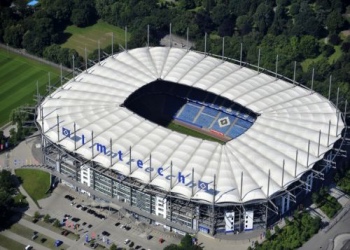
By euroluftbild.de/Grahn (08.07.2012) [CC BY-SA 3.0 de, CC BY-SA 3.0 or GFDL], via Wikimedia Commons
It’s fair to say that talk about the history of Volksparkstadion is filled with complications. Bahrenfelder Stadion stood on the spot where the current stadium now stands, but that was knocked down in 1951 and completely rebuilt, opening as the original Volksparkstadion in 1953. The name came from the nearby Altona Volkspark and means ‘The People’s Park Stadium’. The current stadium was knocked down in its entirety in 1998 and reopened in 2000, since when it has been given numerous different names.
When it comes to the football club that plays its games there, Hamburg SV is known in Germany as Hamburger Sport-Verein or simply HSV. It is actually a sports club, of which the footballing department is the most famous and successful. Much like the stadium, the club has a mixed history owing to the fact that it was formed as a merger of two different Hamburg-based football teams. We’ll tell you more about that elsewhere on the page, but for now we’ll simply say that the club’s history technically dates back to 1887 when SC Germania, one of the predecessors to Hamburg SV, was formed.
Stats
| Volksparkstadion Stats | |
|---|---|
| Year Opened | 2000 |
| Capacity | 57000 |
| Average Attendance | 55960 |
| Record Attendance | 57000 (Hamburg v Bayern Munich (2009)) |
| Pitch Size | 105 x 68 (7140) |
| Nickname | Volkspark |
| Former Name | AOL Arena, FIFA World Cup Stadium Hamburg, HSH Nordbank Arena, Imtech Arena |
| Owner | Hamburger SV |
| Clubs Hosted | Hamburger SV, Hamburg Sea Devils |
| First Fixture | Germany v Greece (02/09/2000) |
| Hamburg SV Stats | |
|---|---|
| Year Founded | 1919 |
| Nickname | "Die Rothosen (The Red Shorts) Der Dino (The Dinosaur)" |
| Club Mascot | Hermann (a dinosaur) |
| Rivals | FC St. Pauli, Werder Bremen |
| Previous Stadiums | Volksparkstadion, Sportplatz at Rothenbaum |
| Kit | White, Red & Blue (Home) / Blue & Black Stripes (Away) / Red (Third) |
| Training Ground | Hamburger SV Training Ground |
| Shirt Sponsor | Orthomol |
| Team Owner | Club Membership |
| Record Goalscorer | Uwe Seeler (111) |
| Record Appearances | Manfred Kaltz (594) |
Volksparkstadion Photos
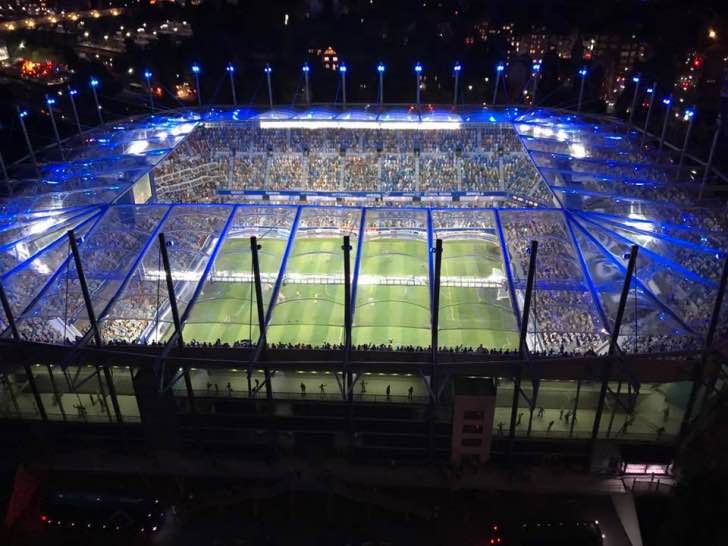
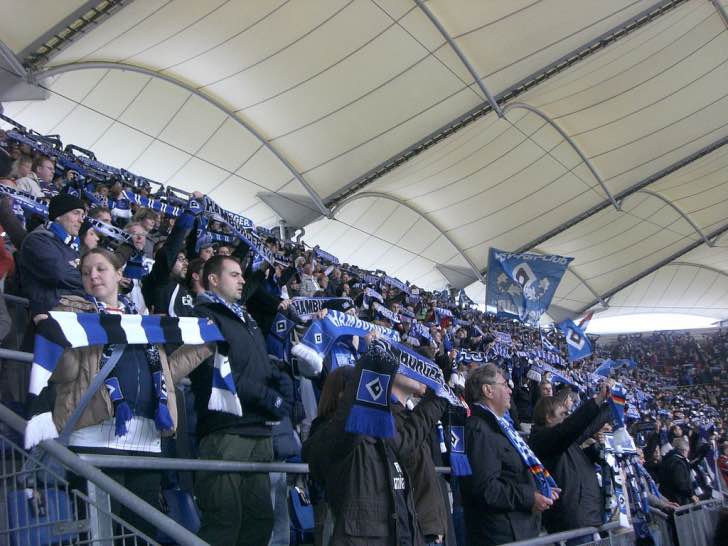
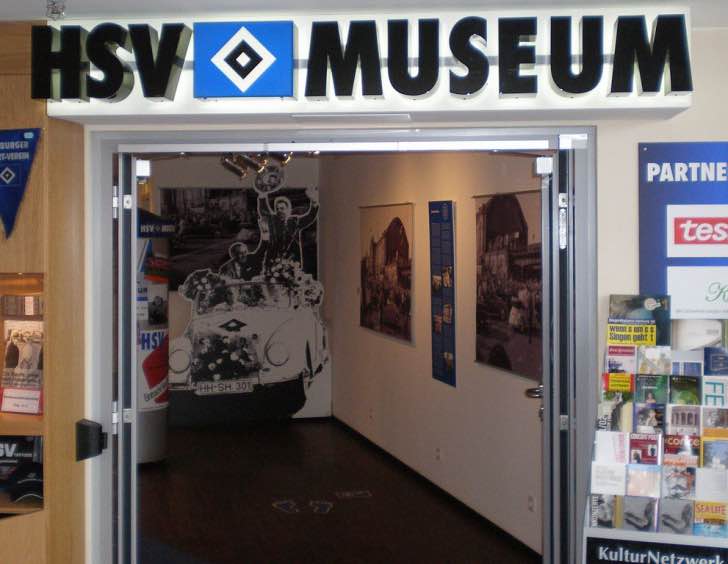
By HSV-Museum
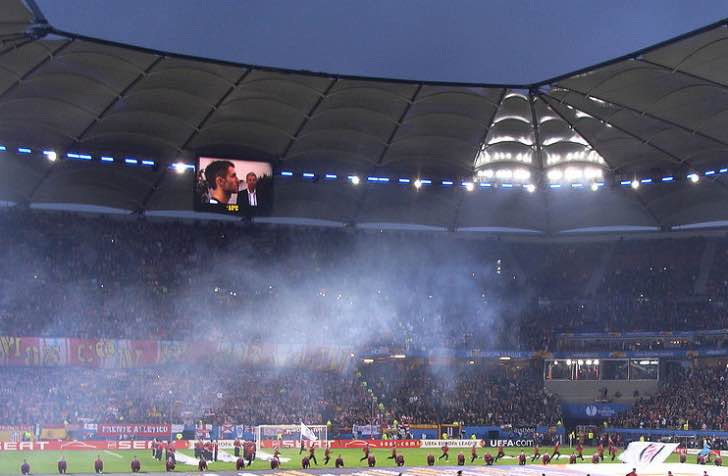
By Nick Sarebi (Flickr) [CC BY 2.0]
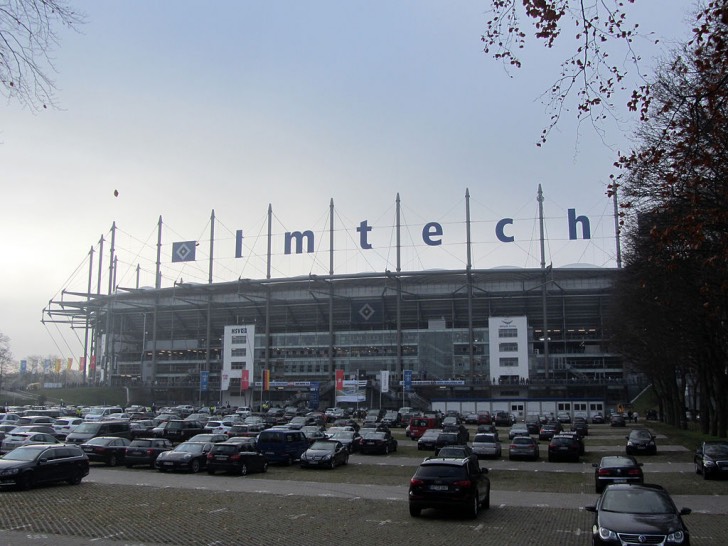
By Markus Unger from Vienna
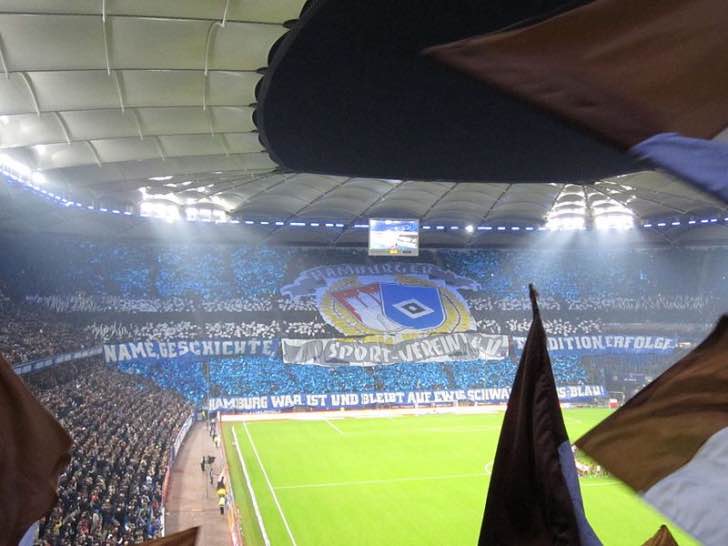
By Son Ikon (Once..) [CC BY-SA 2.0]
Volksparkstadion Seating Plan and Where to Sit
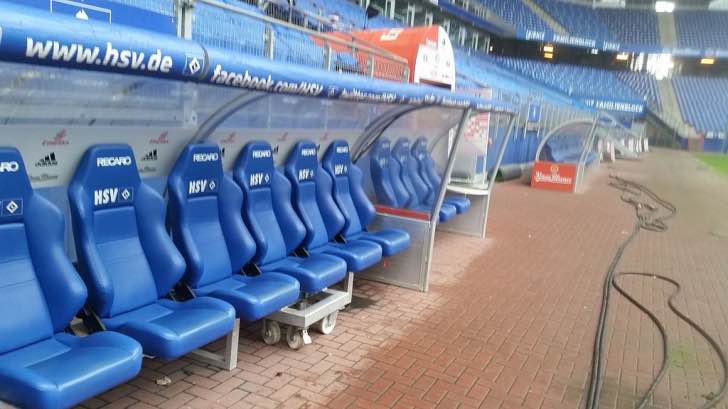
The stadium is built in a bowl of continuous seating, meaning that the corners are filled in. There are two tiers throughout the ground separated by a row of executive boxes, but in the Ost Tribune part of the tiers are separated by a larger VIP area.
Hamburg SV Ticket Prices
If you’re going to see a football match in Germany then you’ll find that the prices of tickets vary on such things as your age, where you want to sit in the ground and the quality of opposition. For example, if you’d been keen to see Hamburg play Mainz 05 in the 2016-2017 season then you’d have paid somewhere between €26 and €64, with differently priced tickets in between those two price bands.
How To Get Hamburg SV Tickets
Tickets are available via the club’s official site, their telephone booking office and at the Volksparkstadion itself. You can also head to fan shops in the centre of Hamburg and through the club’s ticket exchange.
Where to Buy
Getting To Volksparkstadion
Train – It’s possible to get a train from London to Hamburg but it will take about sixteen hours and you’ll have to go via Brussels, Amsterdam and Osnabrück before you end up in Hamburg. Once you’re in the city the S train is excellent and there are three stops that are reasonably close to the stadium, namely Hamburg-Stellingen, Hamburg-Eidelstedt and Hamburg-Langenfelde.
Bus – Buses can get you much closer than the S train will, with the 180 and 380 both stopping at Arenen Station.
Car – For any of you hoping to drive, the main roads you’ll want to keep an eye out for are the 7, the 431 and the 4.
By Air – Hamburg Airport is the closest to the city centre. It’s also served by the excellent S train line and will take about thirty minutes to take you into central Hamburg.
Taxi – If you’d like to get a cab from the centre of Hamburg out to the stadium it will take about 25 minutes and will cost you in the region of €30.
Parking Near Volksparkstadion
There are plenty of parking spaces around the stadium and the other sports arenas close to it, and you’ll only pay about €5 for the privilege too.
Useful Resources
Volksparkstadion Hotels
The stadium is on the North Western edge of the city, and some of the closest and most reasonably priced hotels are listed below.
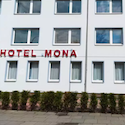
Hotel Mona - £60+
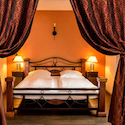
Hotel SleepInn Volkspark - £70+
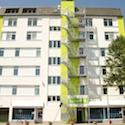
bedpark Stellingen - £80+
Pubs and Bars Near Volksparkstadion
There aren’t many pubs close to the stadium, but there are plenty a short distance away.
Frau Moller
Pub in the City62
Herz Hamburg
Hospitality
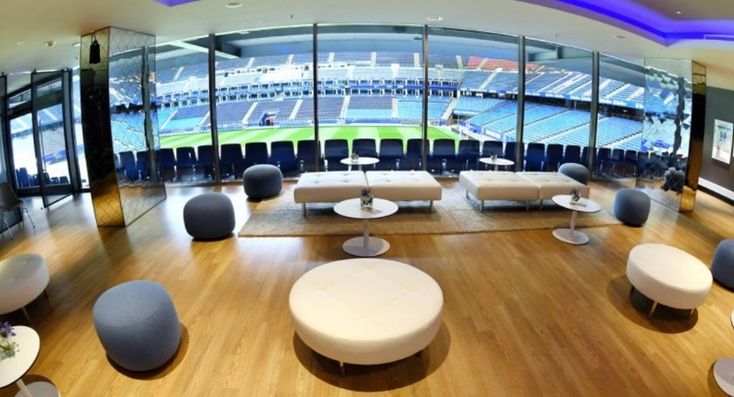
There are a host of hospitality options available for those of you that like to watch football from a more privileged position, such as the business seats, executive boxes and the 1887 Club. Obviously each option has a different level of hospitality, with some just offering more comfortable seating and others promising access to food and lounges.
Private Hire
If you’re looking to host an event in Hamburg then the facilities on offer at the Volksparkstadion will impress. Get in touch with the club for more information on what sort of events you can host and where in the stadium is beat for what you’re hoping to do.
Stadium Tours & Museum
You can enjoy a tour of the Volksparkstadion starting at 12pm, 2pm or 4pm, depending on the time of year. The tours will take you into numerous different areas of the ground that you wouldn’t normally get to see, such as the VIP area, the press conference room and the entrance that the bus pulls into. Tours only cost €7 for adults and €5 for concessions.
There’s a museum, too, so that’s an added bonus. You can double the tour fees and include the museum as part of your visit, which is well worth it.
About Hamburg SV
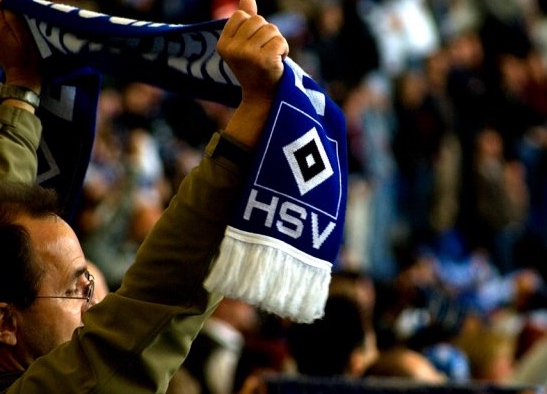
Hamburg SV traces its roots back to the 29th of September and the merger of Der Hohenfelder Sportclub and Wandsbek-Marienthaler Sportclub into a side that took the name Sport-Club Germania Hamburg. SC Germania itself merged with Hamburger FC and FC Falke Eppendorf on the 2nd of June in 1919 to form the team we now know as Hamburger Sport-Verein, or Hamburg SV. A decision to merge the three sides came about because all three of them had been left severely depleted for both manpower and finances by the First World War. It didn’t take long for the new side to become reasonably successful, competing in the 1922 German football championship
final against Nürnberg.
Hamburg were one of the sixteen clubs invited to form the Bundesliga in 1963. Interestingly, they’re the only side to have been part of that original Bundesliga season that has not been relegated at all over the years. There is a clock on display in the corner of the ground that displays the time, to the second, since the Bundesliga was formed. They’ve won the German Championship title six times in all, with their first title win coming in 1923 and their most recent in 1983. They’ve also won three DFB-Pokal trophies, two DFB-Ligapokals and a European Cup.
Volksparkstadion History
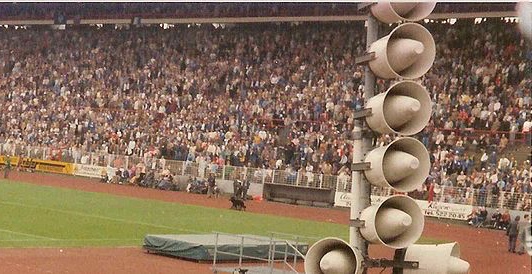
The initial Volksparkstadion opened in 1953, with most of the building materials used for its erection taken from a local district that was destroyed by Allied bombing in the Second World War. Up to 75,000 people could fit into the new stadium, but Hamburg SV didn’t actually start using it until 1963. It was never a hugely popular stadium with the fans, with many feeling that it was in desperate need of an upgrade by the mid-1980s. By the end of the 1990s the situation became almost untenable, so a decision was taken to knock it down and build an entirely new stadium.
The aim wasn’t only to give Hamburg SV somewhere new to play, but also to aid Germany in their attempts to host the World Cup in 2006. The new stadium was built on a 90 degree rotation to the original, to take advantage of the natural light that was then able to shine on all four stands in almost equal measure and provide similar views from all parts of the ground. When it was rebuilt it was also redesigned, with the running track removed to take the play closer to the supporters. The capacity is 57,000 for league matches but it’s reduced to 51,500 for international matches as supporters are not allowed to stand. For that reason the standing area is converted into seating.
Future Developments
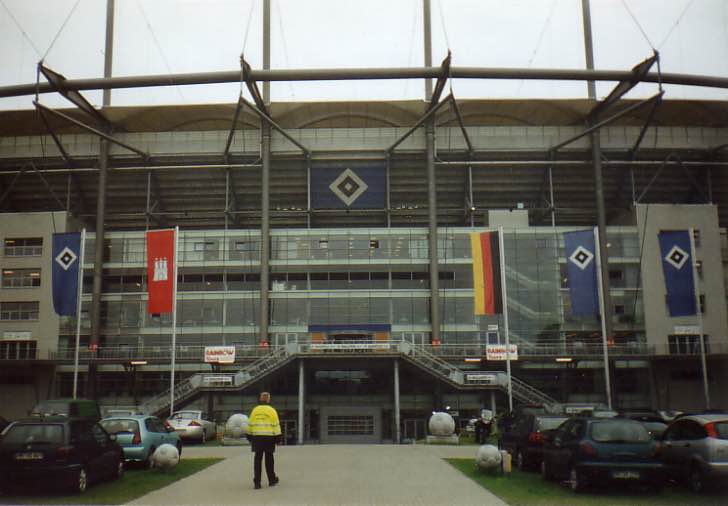
At the time of writing there are no specific plans to develop the stadium. It is still seen as relatively new and therefore there’s no real need to do much to it, although there were some improvements made before Euro24. These included a roof membrane replacement, installing new floodlights and a PA system, as well as an upgrade of the toilets and VIP area.
